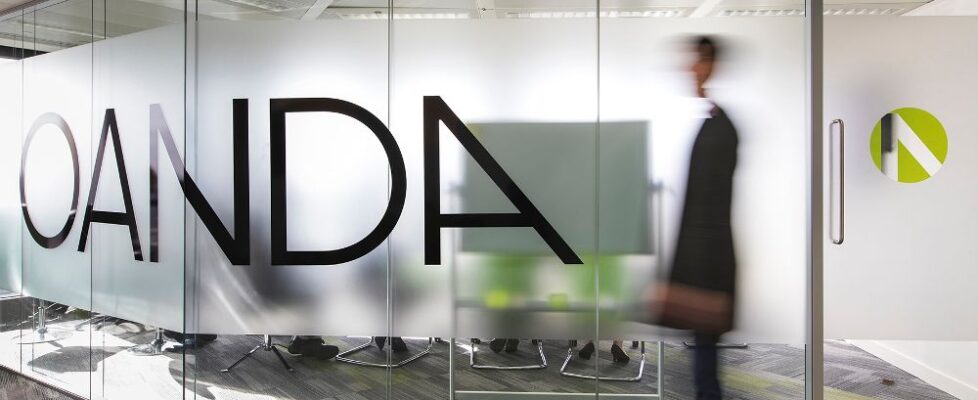OANDA, GAIN Capital clash over claim construction in patent infringement lawsuit
Two major Forex brokers – OANDA and GAIN Capital, are still locked in a patent fight in Court. Their latest point of disagreement concerns the so-called claim construction. Both companies have filed documents explaining their positions on the matter with the New Jersey District Court.
Let’s recall that in this lawsuit OANDA alleges that GAIN infringes two patents, U.S. Patent Nos. 7,146,336 (“the ’366 patent”) and 8,392,311 (“the ’311 patent”).
On March 5, 2013, the United States Patent and Trademark Office issued United States Patent No. 8,392,311, entitled “Currency Trading System, Methods, and Software.” The ’311 Patent teaches, among other things:
In one aspect, the present invention comprises a system for trading currencies over a computer network. A preferred embodiment comprises: (a) a server front-end; (b) at least one database; (c) a transaction server; (d) a rate server; (e) a pricing engine; (f) an interest rate manager; (g) a trade manager; (h) a value at risk server; (i) a margin control manager; (j) a trading system monitor; and (k) a hedging engine. In another aspect, the present invention comprises methods for trading currency over a computer network. In another aspect, the present invention comprises software for currency trading over a computer network.
On December 5, 2006, the United States Patent and Trademark Office duly and legally issued United States Patent No. 7,146,336, entitled “Currency Trading System, Methods, and Software.”
The ʼ336 Patent teaches, among other things:
In one aspect, the present invention comprises a system for trading currencies over a computer network. A preferred embodiment comprises: (a) a server front-end; (b) at least one database; (c) a transaction server; (d) a rate server; (e) a pricing engine; (f) an interest rate manager; (g) a trade manager; (h) a value at risk server; (i) a margin control manager; (j) a trading system monitor; and (k) a hedging engine. In another aspect, the present invention comprises methods for trading currency over a computer network. In another aspect, the present invention comprises software for currency trading over a computer network.
The guiding principle in claim construction is that a patentee is entitled to define what his or her invention is, and it is “unjust to the public, as well as an evasion of the law, to construe a patent in a manner different from the plain import of its terms.” Claim construction “is simply a way of elaborating the normally terse claim language in order to understand and explain, but not to change, the scope of the claims.”
OANDA argues that the claim terms in its patents use plain and ordinary language and, for the most part, require no construction from this Court. GAIN, however, seeks to limit the full and proper scope of OANDA’s patent claims through the claim construction process by (1) proposing constructions that narrow the meaning of the claims, and (2) arguing that a number of claim terms cannot be construed because they are indefinite and thus invalid.
OANDA disagrees with GAIN. OANDA says that, to the extent GAIN proposes constructions of certain claim terms, those constructions violate established tenets of patent law by adding or substituting words to change the meaning of claims.
Under GAIN’s proposal, for example, the phrase “in communication with” becomes “in direct communication with”. According to OANDA, the addition of the word “direct” finds no support anywhere in the intrinsic evidence.
Let’s take another example of a disputed term – “hedging engine”.
According to OANDA, this term does not require judicial construction because it uses plain English words in their ordinary way. “Hedging engine” is not highly scientific, technical, or otherwise opaque jargon with which the Court or lay jurors would be unfamiliar.
An “engine” is a software program.And “hedging” is controlling risk associated with price movements. Indeed, according to Defendants’ own forex.com product website, “hedging is a common practice in financial markets,” and “hedging is a method of reducing risk in trading by opening one or more positions that will balance an existing trade.”
GAIN argues that this term is a “means plus function” term governed by 35 U.S.C. § 112(6) and is indefinite for failing to identify corresponding structure.
OANDA says it provides a construction beyond plain and ordinary meaning out of an abundance of caution. Thus, to the extent the Court believes a construction is necessary, OANDA contends that this claim is not governed by 35 U.S.C. § 112(6) and proposes a construction of: “software that determines when to control risk in a currency trading system.”
OANDA requests that GAIN’s efforts to redefine the invention must be rejected.





